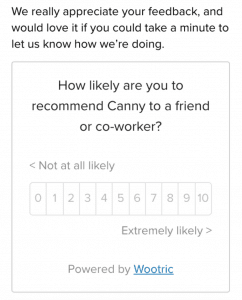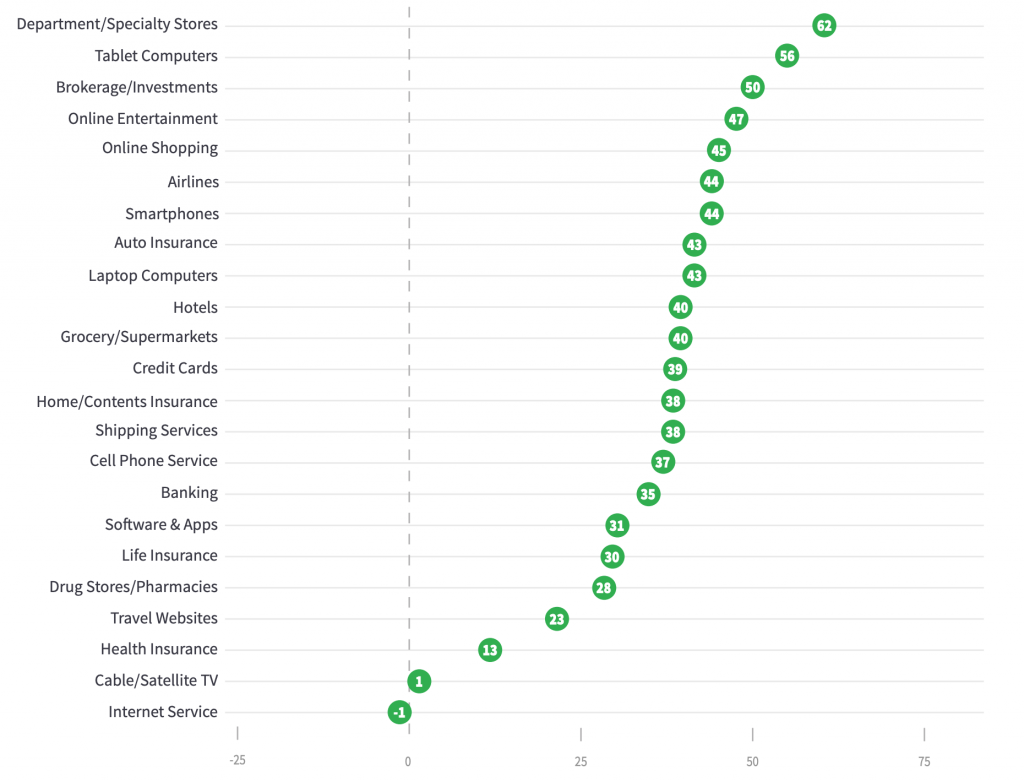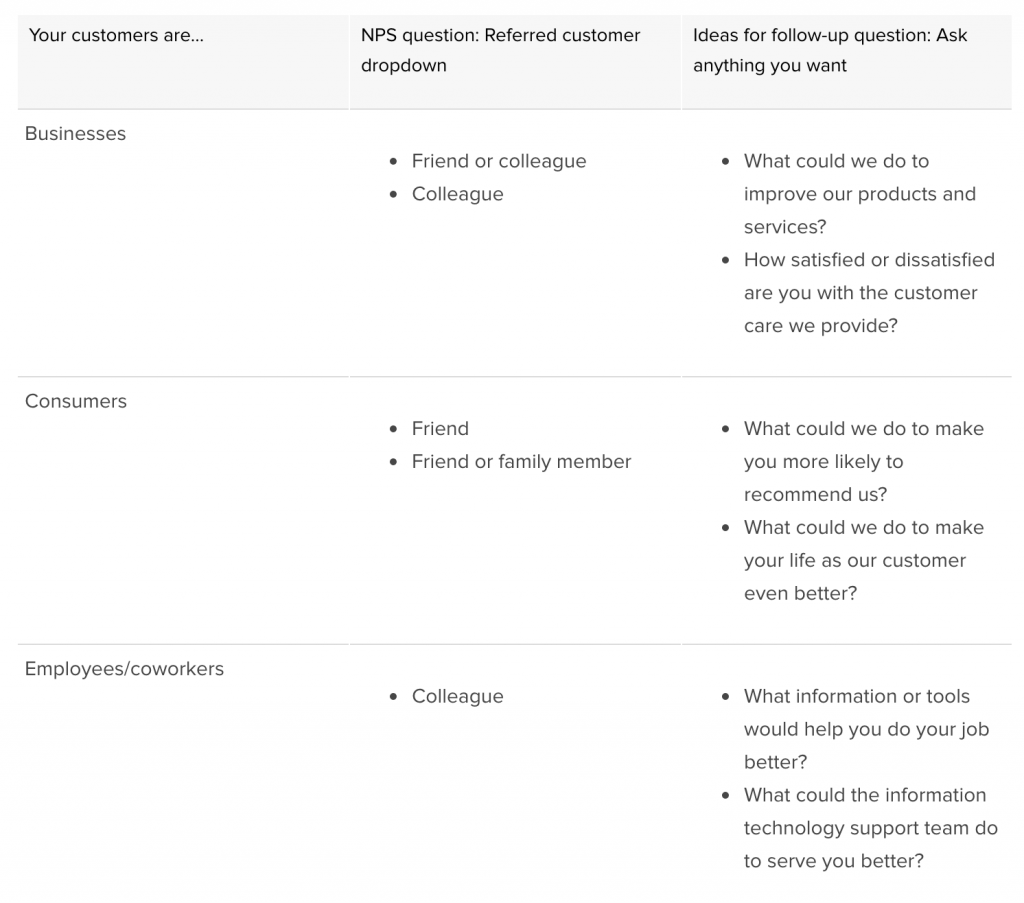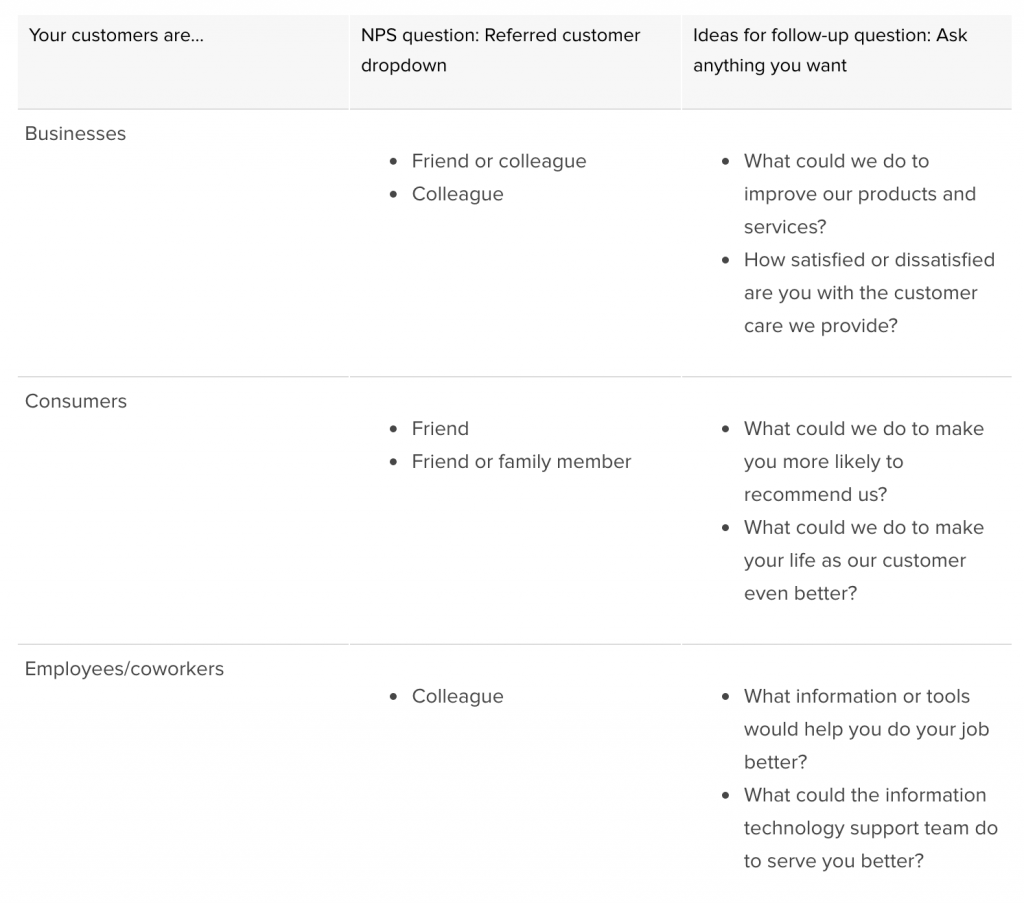There are a lot of customer support and satisfaction metrics out there.
These metrics have different levels of importance for companies in different stages. They also require different levels of effort for both you and your customers.
If you’re just starting out with gathering user satisfaction feedback, you probably want something easy and straightforward.
There’s a simple metric out there that gives you a good, easy snapshot of your customers’ satisfaction — NPS.
Also known as net promoter score, NPS is one of the easiest feedback methods to implement right off the bat.
In this post we’re going to talk about what NPS is, what it consists of, and how to handle the results.
What is Net Promoter Score (NPS)?
NPS is a scale of how likely people are to recommend your product or service to others — aka how likely they are to be “promoters” of your company.
The NPS calculation uses the answers to this question:
How likely are you to recommend our company/product/service to a friend or colleague?
The answer is a scale of 1 to 10, with 10 being “extremely likely”, and 0 being “not at all likely”.
Most NPS surveys also include a comment box after the rating – to give the respondent a change to explain the score if they want to.. This is an excellent source of additional and more accurate customer feedback.
If a customer chooses not to leave a comment, you can usually contact them through email to discuss their score further (if they’re willing).
Here’s an example of our NPS in action:

Based on their score, users fall into three categories:
- Promoters (score 9-10)
- Passives (score 7-8)
- Detractors (score 0-6)
Satmetrix, the company behind the idea of NPS, defines these categories like so:
- Promoters are loyal enthusiasts who will keep buying and referring others, fueling growth.
- Passives are satisfied but unenthusiastic customers who are vulnerable to competitive offerings and customer churn.
- Detractors are unhappy customers who can damage your brand and impede growth through negative word-of-mouth.

Based on these groups, you can calculate your final NPS. Net promoter score is the percentage of promoters minus the percentage of detractors.
% promoters − % detractors = Net Promoter Score
The average NPS varies by industry. Here are the average scores for 23 industries according to Satmetrix:

Technically, every company with an NPS over 0 is considered to have a good NPS score. However, if you’re aiming for a high NPS, +50 is generally deemed excellent, and anything over +70 is exceptional.
There are three main benefits to using NPS:
- It points out areas of improvement in customer experience
- It’s an indicator of customer loyalty as well as satisfaction
- It allows you to identify and get to unhappy users fast and boost customer retention
Promoters of your company also help with referrals to potential customers and word of mouth marketing.
If you keep an eye on your passives and detractors and work on turning them into promoters, you’ll have even more people talking about you.

Come backstage, where we share an honest look into building Canny. You’ll be the first to know when we post new content.
How to implement NPS
An NPS survey is fairly easy to set up in your product, service, or website.
If you’re looking for an easy solution to start with, you don’t want to spend time on building a system from scratch.
Luckily, there are plenty of service providers for this:
At Canny, we use Wootric , and have found it perfect for what we need. Their solution is easy to set up, has a clean and easy- to-use interface, and provides ample reports for analysis of NPS data.
An important aspect of NPS is timing it right. Nobody likes having a survey pop up after signing into their account for the first time. You want to give your customers enough time to use the product or service before asking how they would rate it.
When it comes to frequency of the survey, keep it as sparse as you can. It’s nice to do it fairly regularly to see your score change, but it’s important to not let it get annoying. We suggest doing it no more than once a quarter per person.
The last thing you want is to frustrate a satisfied customer with too many survey requests. It could actually end up lowering your NPS results!
You can also slightly customize your NPS question to fit your company better and make it less generic. Zendesk has a great article about how to send an efficient NPS.
Here’s a handy table from that post about customization:


Net promoter surveys are pretty simple to begin with, but subtle customization will help you get more and targeted information from your responses.
You might also want to dive into NPS across various customer segments. It could be that you have happier customers that use one of your services. Or, customers who are early in the customer journey might respond poorly because there’s a problem with your onboarding.
NPS combined with data about your customer base is incredibly powerful.
What to do with the results
First of all—don’t worry if you come up with a low NPS at first. You’re learning, and there are ways you can deal with it.
As for what to do with the results, different score groups require different actions.
Promoters: use them to your advantage:
- Ask for reviews on GetApp, G2Crowd, Capterra, or similar
- Ask them for a testimonial or case study that you can put on your website and social media
- Point them to a referral program if you have one
Passives: try to turn them into promoters:
- Read why they chose that score
- If they didn’t specify, have customer service reach out and ask
- See if there are any quick wins to be had or fixes you can make that would make them change their score
Detractors: reach out urgently:
- Reach out personally, regardless of whether they gave an explanation or not
- Figure out what you can do to fix whatever made them give you a low score
Don’t forget to reach out to passives and detractors after you have made fixes or changes to your product or service.
Letting them know you listened to their feedback and took it seriously will increase their brand loyalty. They might even go back and change their score, which is a welcome result to see for your work.
It’s also a good idea to keep a regular track of your NPS so you can see how it changes over time.
Start with NPS for an easy first idea of customer satisfaction
NPS is an easy to implement first solution. It’s perfect when you’re just starting out with measuring user experience.
It gives you a quick general idea of what’s going on with customer satisfaction, and is an excellent source of general feedback.
You get the chance to reach out to unhappy users personally, make it right, and see the difference it makes to your bottom line.
Do you use NPS? What are some of the biggest improvements you’ve made based on survey results?













